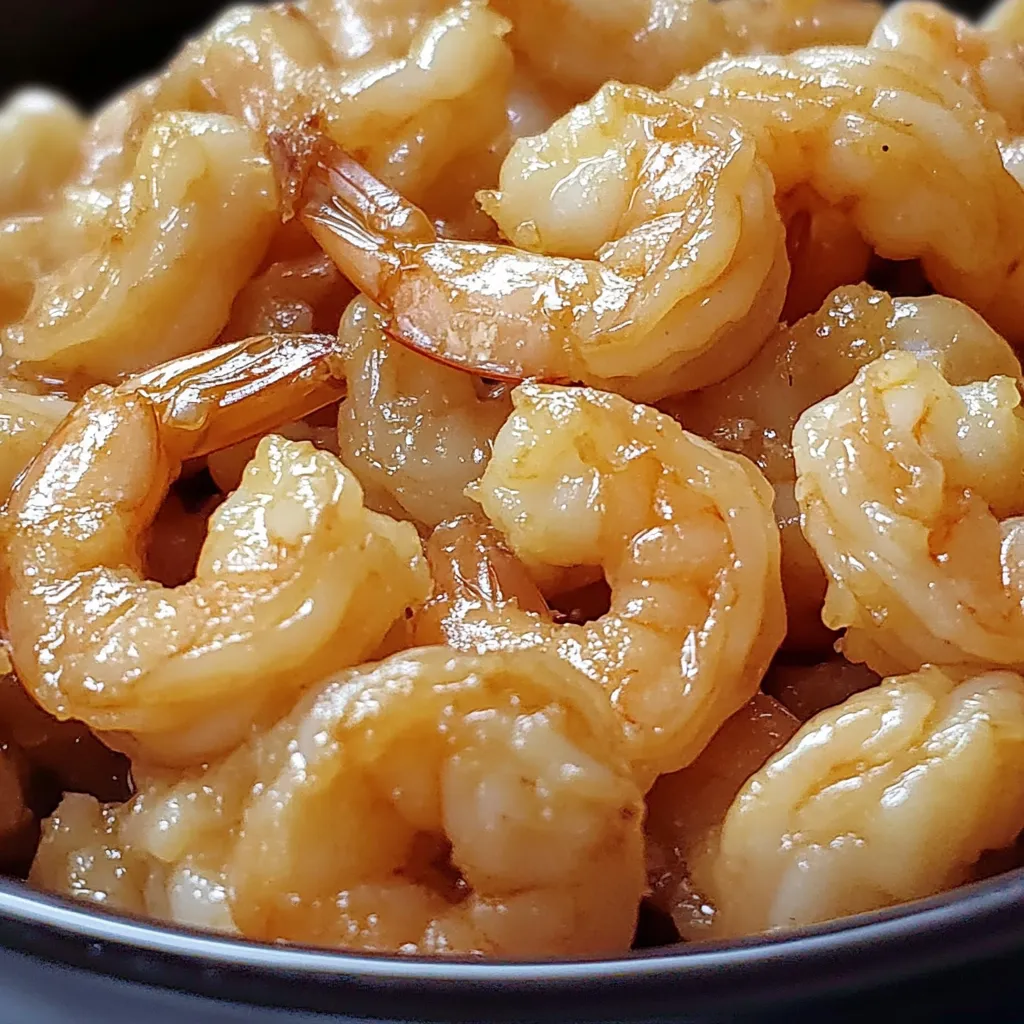Why You’ll Fall in Love with This Chinese Coconut Shrimp
If there’s one dish that always impresses guests — and never fails to disappear fast — it’s Chinese Coconut Shrimp. Crispy on the outside, tender inside, and coated with that subtle sweetness from toasted coconut, this dish captures the perfect harmony between savory and tropical flavors.
I love how these shrimp come out perfectly golden every time. The contrast of the crunchy coconut crust and the juicy shrimp beneath it is unbeatable. The scent of coconut mingling with the sizzle of shrimp in hot oil fills the kitchen with a warmth that feels both comforting and exotic. It’s one of those recipes that looks restaurant-level but is surprisingly easy to pull off at home.
Ingredients for Perfectly Crispy Coconut Shrimp
The key to great coconut shrimp is balance — a crisp outer shell that doesn’t overpower the delicate sweetness of the shrimp. You only need a few simple ingredients to create that golden perfection.
Ingredients:
- 1 lb large shrimp, peeled and deveined
- 1 cup shredded coconut (sweetened or unsweetened, based on preference)
- ½ cup breadcrumbs (panko for extra crunch)
- ½ cup all-purpose flour
- 2 large eggs
- 1 teaspoon salt
- ½ teaspoon black pepper
- 1 teaspoon garlic powder (optional)
- Cooking oil (for frying)
If you prefer your shrimp with a bit of sweetness, use sweetened coconut. For a more savory, crisp texture, go with unsweetened. I like to mix both for a balanced flavor that keeps everyone guessing.
How to Prepare the Shrimp for Maximum Crunch
Start by rinsing the shrimp under cold water and patting them completely dry with paper towels. This step might seem minor, but it’s crucial — moisture prevents the coating from sticking properly.
Set up a simple dredging station with three bowls:
- One for flour,
- One for beaten eggs with a pinch of salt,
- And one for the shredded coconut and breadcrumbs mixture.
Season the shrimp lightly with salt, pepper, and garlic powder. The garlic powder is optional, but it adds a subtle depth that complements the coconut beautifully.
The Secret to That Signature Crunchy Coating
Now comes the fun part — coating each shrimp. Dredge each one in flour first, shaking off the excess. This dry layer helps the egg stick better. Then dip the shrimp into the beaten eggs, letting the extra drip off before pressing it firmly into the coconut-breadcrumb mix.
Press gently so the coating clings well; this helps it stay crisp and intact during frying. You’ll start noticing the shrimp looking almost too pretty to cook — golden-white and flecked with bits of coconut.
Frying the Shrimp to Golden Perfection
In a large skillet, heat about half an inch of oil over medium heat until shimmering. You can test it by dropping in a small breadcrumb — it should sizzle immediately but not burn.
Carefully place the coated shrimp into the oil, making sure not to overcrowd the pan. Fry each batch for 2–3 minutes per side, or until golden brown and crispy. The aroma that rises as the coconut toasts is absolutely mouthwatering — you’ll know they’re done when they turn a rich golden color.
Remove the shrimp with a slotted spoon and place them on paper towels to drain any excess oil. The result should be crisp, light, and perfectly cooked shrimp that stay juicy inside.
How to Serve Coconut Shrimp the Authentic Way
Coconut shrimp are best served immediately — the crunch is at its peak when they’re fresh from the pan. I love pairing them with a tangy dipping sauce like sweet chili, mango, or even a creamy honey-mayo blend.
For a complete meal, serve the shrimp over jasmine rice or alongside stir-fried vegetables. They also make an excellent appetizer for gatherings — easy to grab, easy to love.
If you’re planning to impress, sprinkle some finely chopped green onions or toasted sesame seeds on top for that restaurant-style finish.
Tips and Tricks for Foolproof Coconut Shrimp
- Don’t skip drying the shrimp. Excess moisture can make the coating slide off.
- Use panko breadcrumbs. They give the shrimp a lighter, airier crunch.
- Fry in small batches. This keeps the oil temperature steady and prevents sogginess.
- Drain well after frying. It helps the coating stay crisp longer.
- Want it healthier? You can bake them at 200°C (400°F) for 15–18 minutes or air fry for about 10–12 minutes.
I’ve tried all three methods, and while frying gives the best texture, baking or air frying still delivers impressive crispness with less oil.
Creative Serving Ideas and Pairings
These shrimp go beautifully with tropical flavors — try serving them with pineapple salsa or coconut rice for a full island-inspired meal. If you like a touch of heat, drizzle some sriracha mayo over the top.
For a lighter version, serve them on a bed of greens with a citrus dressing. I often make a small platter of coconut shrimp, fresh cucumber ribbons, and mango slices — it’s as colorful as it is delicious.
Why Homemade Coconut Shrimp Beats Takeout Every Time
Making Chinese Coconut Shrimp at home gives you complete control over flavor and texture. Store-bought or restaurant versions often come heavy with batter or oil, while this homemade version stays crisp and light.
Plus, you can adjust everything — from sweetness to seasoning — to match your taste. There’s something deeply satisfying about biting into shrimp you’ve just cooked yourself, hearing that crunch, and knowing it’s made fresh from your kitchen.
Your Coconut Shrimp Questions, Answered
Can I use frozen shrimp?
Yes, but make sure they’re fully thawed and patted dry before coating.
Can I bake instead of frying?
Absolutely. Bake at 200°C (400°F) for 15–18 minutes, flipping halfway. Spray lightly with oil for better color.
Why is my coating falling off?
The shrimp might have been too wet, or the oil wasn’t hot enough. Always dry the shrimp and fry in properly heated oil.
Can I make them ahead of time?
You can prep the coated shrimp in advance and refrigerate them for a few hours before frying. Just don’t let them sit too long or the coating may soften.
What dipping sauces go best?
Sweet chili sauce, mango chutney, honey mustard, or even spicy sriracha mayo all work perfectly.
Crispy, golden, and full of tropical flair, these Chinese Coconut Shrimp are proof that a simple recipe can taste like something straight from your favorite restaurant. Once you try them fresh and hot, with that crunch and hint of coconut sweetness, you’ll want to make them again and again.


